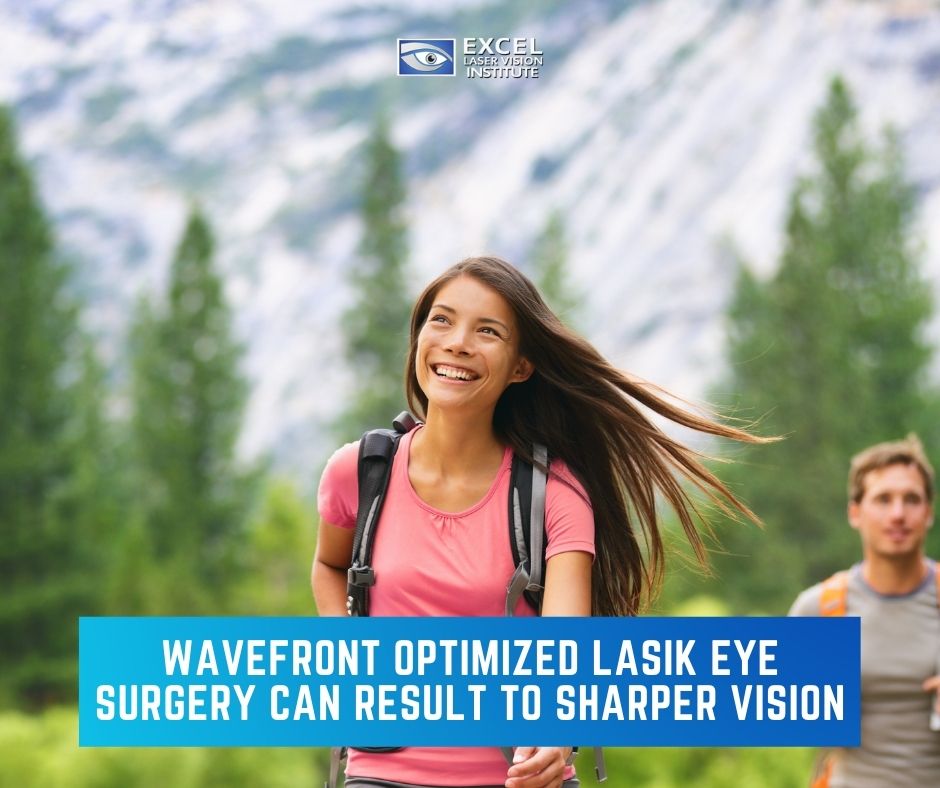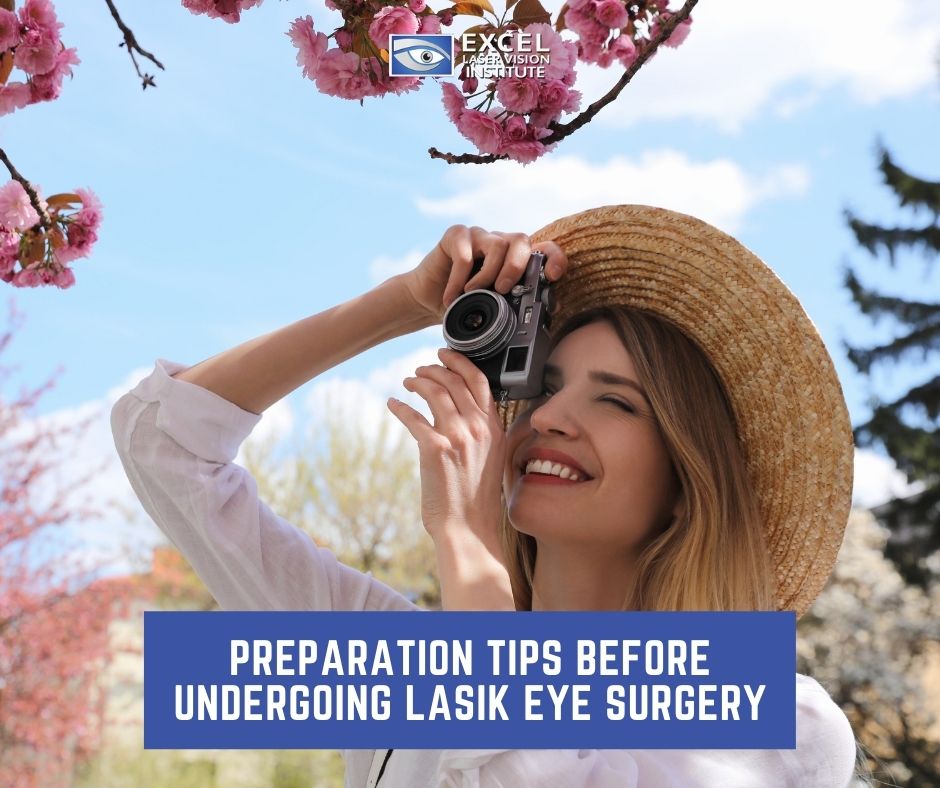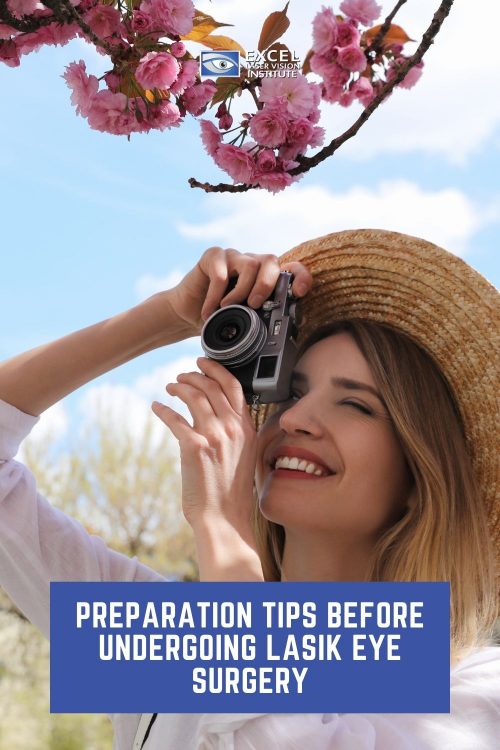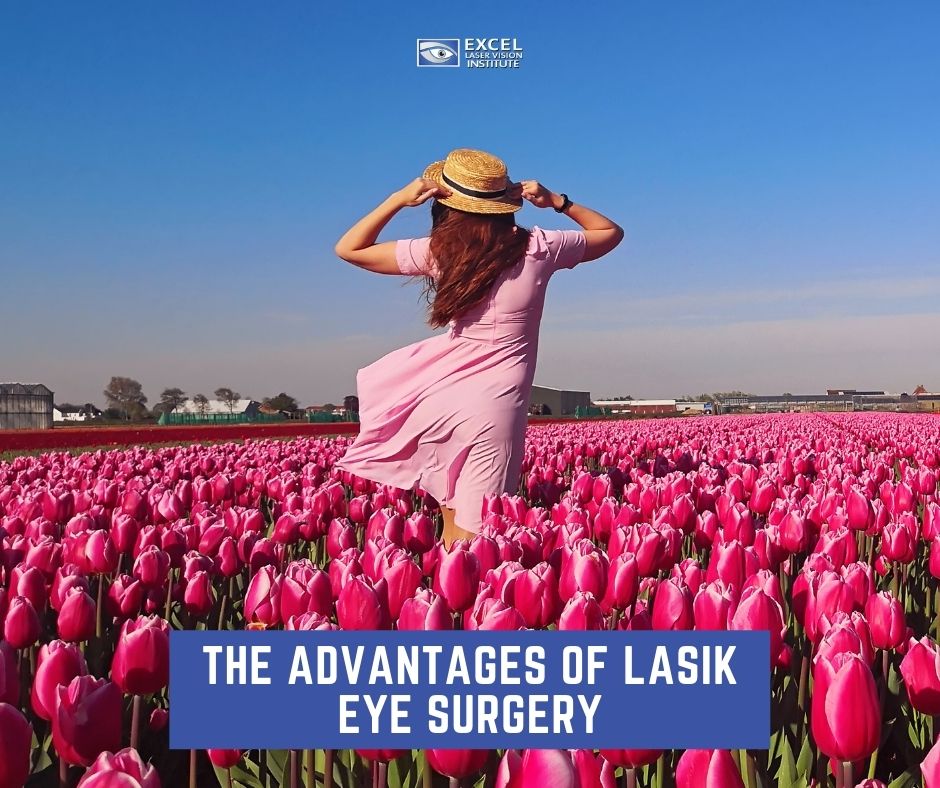
Wavefront Optimized LASIK Eye Surgery can Result in Sharper Vision
If you are a person who suffers from nearsightedness or farsightedness, you can correct your vision with a corrective eye surgery. Generally speaking, this outpatient LASIK eye surgery procedure utilizes a laser to change the shape of the patient’s cornea, enhancing the way the eyes focus light rays onto the retina. It’s a very sought-after laser vision correction procedure that has helped millions of people with eye issues worldwide.
Recently, LASIK has gone through modifications that massively improved its reliability. To get the sharpest vision after a LASIK Los Angeles procedure, think about having a Wavefront Optimized Laser Vision correction procedure. Wavefront Optimized Laser technology provides a more accurate and personalized evaluation of the one-of-the-kind characteristics of your eyes to achieve better results.
What is Custom Wavefront LASIK?
Some people who ask about LASIK eye surgery cost also want to know about custom wavefront LASIK, also known as LASIK or wavefront LASIK. Eye doctors tell us that custom LASIK or wavefront LASIK adds a significant level of precision and personalization to LASIK vision correction surgery by using advanced wavefront technology to assess the unique characteristics of a person’s eyes.
Although eyeglass prescriptions are not uncommon, millions, even billions, of people can have similar eyeglass prescriptions. Due to the unique characteristics of every person’s eyes that can’t be measured with traditional techniques used to ascertain refractive error during an eye exam, people who have the same eyeglasses prescription will see with various levels of clarity compared to individuals with the same prescription lenses.
On the other hand, custom LASIK uses more detailed information rather than just conventional eyeglasses prescription to program the excimer laser that reshapes the eye during the vision correction procedure.
The wavefront technology used for custom LASIK makes the procedure a cut above a conventional LASIK procedure in two ways:
Custom Wavefront LASIK is More Accurate
While your eye doctor gives you a routine eye exam, he or she will bring in various lenses in front of your eyes as you look at an eye chart and ask you which lens lets you see the letters clearer? Is it lens 1 or lens 2? Occasionally the lenses will look similar, and it’s difficult to select which one makes you see the chart clever. Perhaps it’s a lens in between the two?
Your eye doctor uses a dial instrument that requires them to click through to find out a person’s eyeglasses prescription using the smallest unit of power – 0.25 diopter (D). That’s why eyeglass prescriptions have numbers such as -1.25 D and -1.50 D, but not 1.3 D.
The power of lenses needed to correct a person’s vision is measured in 0.01 D units when it comes to wavefront LASIK. Essentially, during your eye exam, rather than your eye doctor giving you “lens 1” and “lens 2” to select from, you have twenty-four extra lenses in between these two to choose from.
Fortunately, choosing the lens that precisely corrects your vision for a custom LASIK procedure is carried out right away by a computer, rather than you making the decision.
When assessing the refractive errors within the eyes in 0.01 D increments (instead of 0.25 D increments, as in a routine eye exam), measurements used for custom wavefront LASIK are 25 times more accurate than lens powers used in an eyeglasses prescription.
Custom Wavefront LASIK is More Individual
When your eye doctor ascertains your eyeglass prescription during your eye exam, they determine your eye’s ability to focus light as a complete whole. One lens prescription is worked out for the whole eye.
Measurements collected for custom LASIK are accumulated from hundreds of separate reference points on the eye’s front surface. All these data points are used to produce a detailed map of refractive error and focusing imperfections known as higher-order aberrations throughout the entire cornea.
Afterward, this map is used to program the excimer laser to give a personalized vision correction for your particular requirements.
What are the Types of Custom LASIK?
There are three essential types of custom LASIK eye surgery procedures:
- Wavelength-Guided LASIK: This procedure involves detailed, wavefront-generated measurements based on how light waves travel through your eyes and fall on the retina, to produce a laser treatment that is entirely personalized for the eye anatomy and vision requirements. Besides, correcting nearsightedness, farsightedness, and astigmatism, wavefront-guided LASIK lowers irregular higher-order aberrations that can lessen visual clarity even after all significant refractive errors are corrected.
- Wavefront-Optimized LASIK: This procedure involves detailed measurements of the curvature of the eye’s front surface to maintain the natural aspheric shape of the cornea. Maintaining the cornea’s natural shape lowers the risk of a specific type of higher-order aberration known as spherical aberration, which can happen naturally in an eye or result from other types of laser vision correction procedures. Typically, spherical aberration is brought about by halos around lights and other night vision problems.
- Topography-Guided LASIK: This procedure involves detailed measurements of the cornea’s surface to program the laser to tackle vision issues caused by corneal irregularities (including corneal scars) besides refractive errors. Topography-guided LASIK is not a wavefront LASIK procedure, but it provides a more personalized vision correction than conventional LASIK.
Does Custom LASIK Provide Better Results than Traditional LASIK?
Custom LASIK delivers the most precise form of LASIK available today. Individuals who go through custom LASIK achieve more significant vision results, with a higher possibility of achieving 20/20 vision and better overall vision.
Who are the Ideal Candidates for Wavelength?
The main reasons why people choose to undergo LASIK is because they are fed up with wearing eyeglasses or contact lenses, for cosmetic reasons, for social or marriage, or for lifestyle activities that are inhibited by eyewear such as outdoor sports such as golf, football, water sports or hiking.
Some people don’t believe eyeglasses are attractive. Frequently, there is some level of distortion when looking through the periphery of the glasses, the field of vision is lowered, and sometimes when leaving a cold room, moisture can fog the glasses which can be unsuitable for particular careers such as the Army, Merchant Navy, Airlines, Air Force, Railways and professional sports.
On the other hand, contact lenses need a lot of attention to hygiene when inserting removing them since lack of hygiene can result in infections.
Wavefront LASIK gets rids of all these disadvantages. Wavefront-guided LASIK has made it possible to treat a larger spectrum of patients. This procedure especially helps people with eye issues to have a clear vision, which would have otherwise been difficult with the older procedures. Furthermore, those unhappy with any form of vision correction are candidates for Wavefront-guided customized treatments.
What are the Advantages of Wavefront-Guided LASIK Over Standard LASIK
Recently, studies have shown these advantages of wavefront-guided LASIK compared to traditional LASIK:
- 100% patient satisfaction with very few side effects or complications.
- 70% of these patients achieved one to two lines of visual acuity more than what was anticipated from this treatment before the procedure.
- 16% of wavefront-guided LASIK patients got a post-procedure uncorrected visual acuity of 6/3 [3 lines smaller than normal].
- Wavefront treatment results were found to bring stable, accurate post-operative results.
- The incidence of postoperative symptoms such as glare, halos, lessened contrast sensitivity, and poor night vision as with standard LASIK are overall absent or significantly reduced with wavefront treatments.
- Wavefront-guided treatment has applications in complicated post-refractive surgery (RK, PRK, LASIK) patients (with considerable symptoms, decentred treatments) as well as in patients professionally needing acute vision.
What are the Features of a Wavelength Laser?
The WaveLight is unsurpassable for wavefront procedures using the quickest and most sensitive eye tracker in the world [500 Hz] to ensure perfectly accurate and well-centered treatments.
This laser has the fastest treatment time, about [500 Hz], which is a vital factor in ensuring uniform treatment over the entire surface of the cornea by minimizing dehydration of the cornea and other external influences during the procedure. Plus, it manages to customize the corneal shape to improve visual acuity and improve contrast, especially in dim light conditions.
The highly advanced WaveLight laser utilizes a ‘Flying Spot’ of 0.9 mm, a requirement to provide accurate placement of laser treatment. This specific treatment leaves nothing to chance. Wavefront procedures very often leave patients with eyesight better than expected. As a matter of fact, some may say patients are left with super–vision or eagle vision.
At Excel Laser Vision Institute, LASIK surgery improves your vision. However, you should consult with the experts about which eye correction surgery is best for you. If you want to know more about LASIK surgery, please do not hesitate to call us at (866) 923-9235.

3 Preparation Tips for Best Results when Getting Laser Eye Surgery
An increasing number of people in southern California who experience vision problems are now turning to Orange County LASIK surgery to finally get the clear vision that they have always dreamed of. Although the actual procedure only takes up to 15 minutes, that doesn’t exempt you from needing to prepare for it. Here are the best steps you can take to prepare yourself for your operation, straight from our team to our valued patients:
Be Realistic. Understand What LASIK Can and Cannot Achieve
Familiarizing yourself with the entire process, from pre-surgery to aftercare, will make you feel more confident walking into your appointment. This particular type of laser eye surgery is designated to alter the shape of your cornea so that you can see more clearly, but it is not right for every patient. For instance, if you have excessively dry eyes or have a more serious and permanent vision impairment, the doctor can deny performing the procedure on you. In order to evaluate your candidacy, you will undergo a comprehensive eye examination, and the doctor will decide which strategy will be best for you.
Select a Highly-Skilled and Experienced Specialist
Selecting a LASIK surgeon who has extensive experience in his profession will ensure you get the best results for your money and your eye health. You want to choose somebody who knows exactly what they are doing, and you will be able to fully trust.
Plan Well Ahead of Time
While you can opt for LASIK surgery as long as you are at least 18 years old and have been approved by an ophthalmologist, a stable prescription lasting for a minimum of 2 years is required prior to your operation. Ask as many questions as possible during your consultation appointment, write them down and bring them to the office if it helps you remember all of them. If any new questions arise in between appointments, contact your doctor right away. Never wait until the last minute to ask important questions about your procedure.
Inform your employer in advance of your LASIK surgery so you may get a couple of days off from work. If you are still in school, you may want to consider scheduling your operation during a break so that you will not have to miss any of your classes. You should be prepared to feel discomfort following surgery, such as slight itching, burning, or watering. This is why you must plan to have somebody you trust drop you off and pick you up from the surgery ahead of time since you will not be allowed to drive.
Are You Ready to Change Your Life with LASIK?
Are you interested in LASIK but uncertain where exactly to start? If so, please reach out to our Brea office today to schedule your free consultation appointment! Our doctor can answer any questions you have, whether it be regarding your candidacy or the cost of laser eye surgery.

Some Ways to Help Recover Quickly and Fully After a Cataract Surgery
The recovery period for cataract surgery is not that complicated. As a matter of fact, it can go smooth and uneventful as long as you follow your doctor’s instructions. (more…)
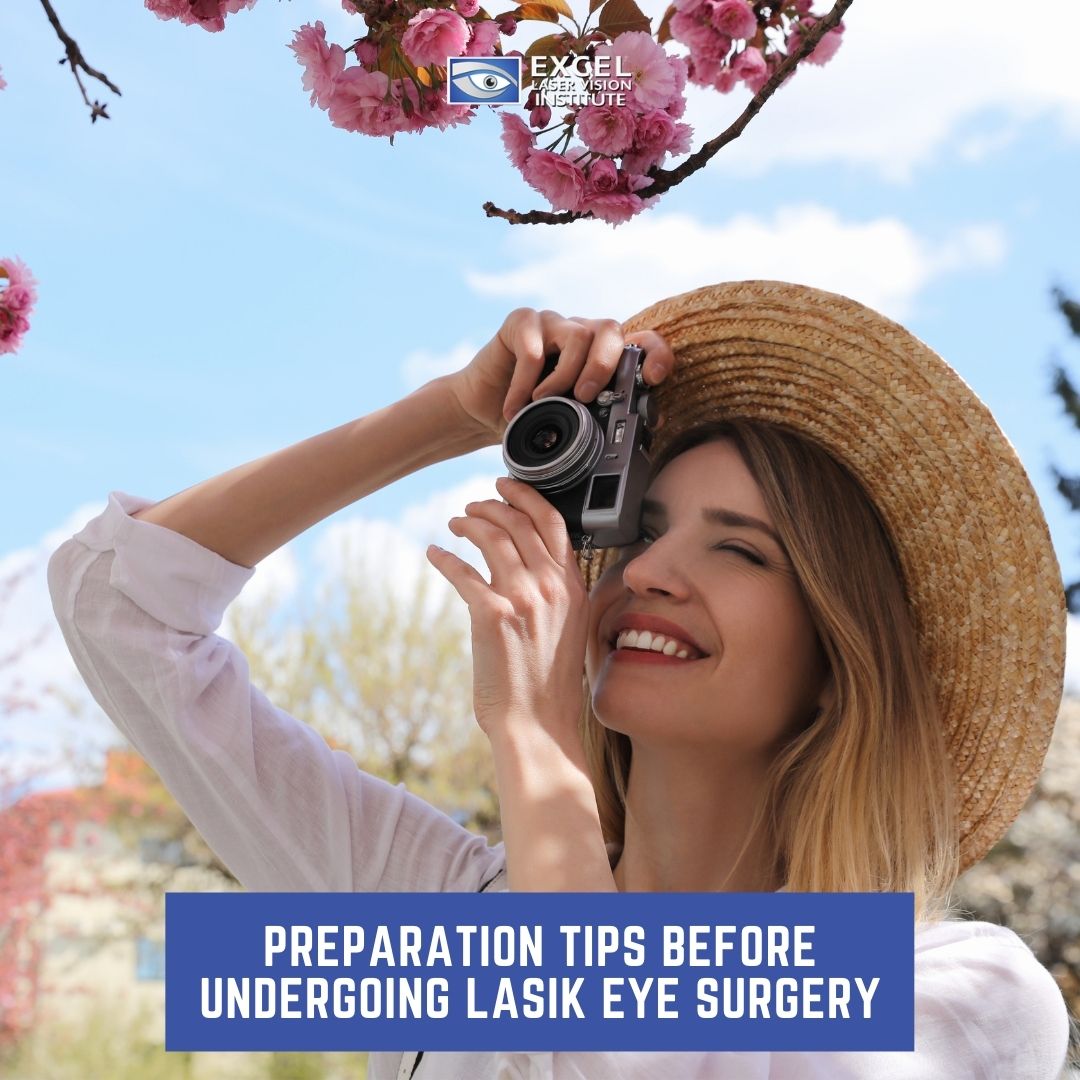
Preparation Tips before Undergoing LASIK Eye Surgery To Ensure Success
Dr. Ferzaad Moosa, a LASIK Orange County eye surgeon explains to us that LASIK eye surgery can help you deal with various visual issues, such as farsightedness, nearsightedness, astigmatism, and other conditions. For the most part, patients who do not have any serious eye or health issues are eligible for LASIK eye surgery. Nonetheless, you should always check with your LASIK eye surgeon before booking your LASIK procedure.
Once you find out you are a good candidate for laser eye surgery, there are things you have to do and stop doing. So, before you start to make plans for the life you’re going to have after your LASIK vision correction surgery, you have to take a look at this way to prepare before your procedure.
Drink a Lot of Water Before the Procedure
Prior to any procedure, you should drink more water unless you were told otherwise by your physician. However, with LASIK you are doing good when you increase your water intake. Boosting your water intake will help you keep hydrated and encourage the healing process after your procedure.
A typical side effect of LASIK eye surgery is temporary dry eye. Therefore, drinking more water is an easy way to help keep your eyes lubricated. If you have already booked your LASIK procedure, it’s time to start getting hydrated. Set your sights on at least 8 eight-ounce glasses per day. It sounds like a lot but that is the ideal minimum amount you should be drinking to keep hydrated.
Stop Wearing Contact Lenses
Before you have your LASIK procedure, your eye surgeon will instruct you to stop wearing contact lenses for at least a week for soft contacts and one month for hard contacts. The reason being is that wearing contacts can change the shape of your cornea and influence the results of your LASIK procedure.
It’s imperative that you give your eyes a break and switch over to eyeglasses for a while before your procedure.
Your eye doctor will be the person to let you know when to stop wearing contact lenses. It will be based on an evaluation of your eyes, and from there he or she will let you know exactly how long before your eye laser procedure to stop contact lens use.
Get a Comfortable Outfit Ready in Advance
It’s important to decide in advance what you wear to the LASIK procedure. Keep in mind that you will be awake during the surgery, so it’s important to feel comfortable in the clothes you’re in. Go with loose clothes that you can easily remove once you get back home.
For instance, this could be athletic shorts, leggings, a zipper hoodie, or a soft t-shirt. After a LASIK procedure, the first thing you will do when you get home is sleep. It’s a lot easier to get to bed if you’re wearing clothes that you can rest in or that you can easily change out of.
Furthermore, try not to wear clothes that produce lint. So, avoid faux fur or wearing any type of clothing that may be shed. This is important since it helps to keep contaminants away from the operating suite. LASIK is a safe and sterile procedure, but it’s a good idea to make that additional effort to avoid lint when you can as well.
Get a Person to Be Your Designated Driver
When you are doing a LASIK procedure, you are not put to sleep. Instead, your eye surgeon will put numbing drops in your eyes. If you are feeling nervous about the procedure, you may be given medication to help you relax.
The numbing drops ensure you never feel any pain when you’re undergoing LASIK. Eventually, these drops wear off after a few hours once the procedure is completed.
Even though no anesthesia is involved in a LASIK procedure, you are not supposed to drive home yourself afterward. Get a friend or a family member that can drive you to your procedure and then drive you back home.
Many LASIK patients can drive during their follow-up appointment the next day. When you get confirmation from your eye doctor, you can return behind the wheel.
Go Through Your Paperwork
Your eye clinic will hand over a LASIK consent form before your procedure. Once you have read through your paperwork, the team will help you answer any further questions you may have regarding the LASIK procedure.
It’s important that patients make an informed decision about the procedure. Therefore, your questions can be about LASIK safety, financing, aftercare, or anything else. Your eye doctor should be happy to discuss them with you!
Don’t Wear Makeup, Perfume, or Lotions
When the day of your LASIK procedure arrives, don’t wear any makeup, perfumes, or lotions. You should take a shower and make sure your face is squeaky clean with absolutely no contaminates the morning of the big day! Don’t forget to skip on any perfumes as well.
Also, don’t put on any hand or face lotions, since this can make your skin oily. You will want to enter your LASIK procedure clean and prepared, and wearing greasy lotions can get into your eyes. Having a successful LASIK procedure is also about being safe.
After your LASIK eye surgery, you will need a day to rest before getting back to your regular activities. Then, you’ll be over the moon to wake up the next day following your procedure with sharp, clear vision.
There is only one factor you will regret about LASIK and that is you will wish you had gotten the procedure done sooner. So, get ready for a life free from eyeglasses and contacts.
Do you live in the Los Angeles or Orange County areas? Contact the professional and dedicated team at Excel Laser Vision Institute as soon as possible to book your free LASIK consultation today!
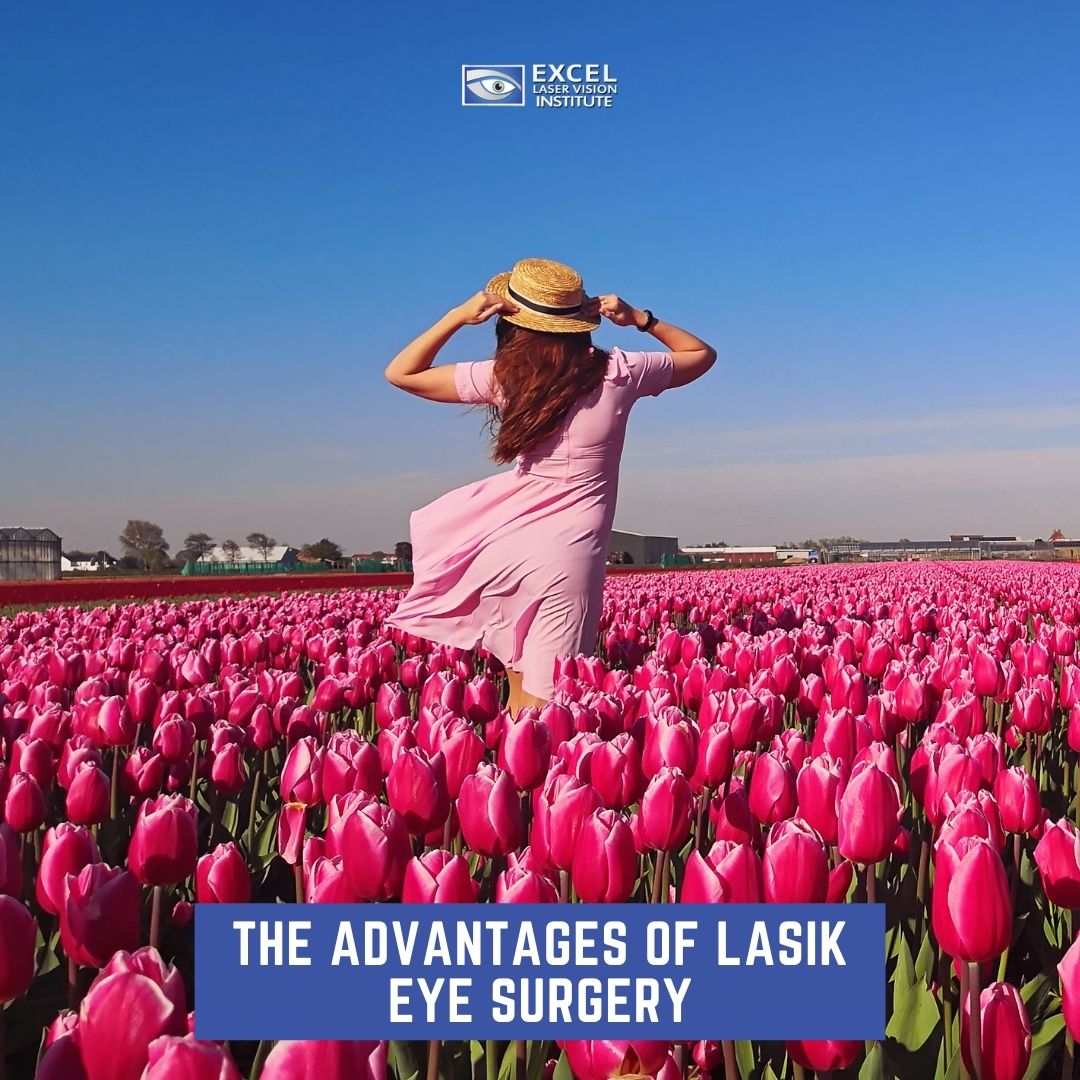
Advantages of LASIK Eye Surgery and Reasons Why You Should Pursue It
LASIK is short for laser in-situ keratomileusis; an eye surgeon performs this refractive surgery at LASIK Los Angeles to correct a patient’s vision problems, including farsightedness, nearsightedness, and astigmatism. Normally, surgeons perform LASIK surgery by cutting across the cornea to raise the flap of tissue and reshaping it.
Over the years, LASIK has increased in popularity because of its many advantages. Many of those who get LASIK end up having successful results!
What are Refractive Vision Problems and Why Do They Happen?
When the eye looks at an object, light enters the eye and passes through the cornea. The cornea contains the natural lens of the eye, which is responsible for refracting the light so that it hits the retina at the back of the eye properly. The retina is the part of the eye that focuses light and sends messages to the brain to help us understand what we are seeing. Nevertheless, when the light is refracted improperly, it doesn’t focus on the retina the right way, resulting in blurred vision.
Refractive problems include:
Myopia: This is nearsightedness that is brought about by a steeper cornea.
Hyperopia: Occurs with far-sightedness and is caused by a cornea that is too flat.
Astigmatism: This is when the cornea is shaped similarly to a football than a soccer ball, and so the light refracts incorrectly.
Presbyopia: A condition that occurs with age and results in changes within the make-up of the natural lens, which causes refractive errors to happen.
What is Laser Vision Correction Surgery?
Laser vision correction is a way of fixing refractive vision issues using state-of-the-art laser technology. It has advanced drastically within the last few decades and is now safer and more precise than it ever was before.
LASIK makes it possible to map the patient’s cornea with exceptional precision, using this information to plan and carry out corneal reshaping. It has a very high success rate as well, and many patients find that they depend on eyeglasses or contact lenses a lot less, if at all.
What is LASIK?
LASIK involves the use of laser technology that cuts a very thin, square flap into the outer layer of the cornea. The eye surgeon then changes the shape of the layers underneath to repair the imperfections in curvature that are causing the distorted vision.
A LASIK procedure is very unique since it is the only laser vision correction that uses the flap technique to perform the changes to the cornea.
Once the necessary corrections to the lower layers of the cornea have been performed, the flap is replaced and left to heal naturally without the need for sutures.
What are the Advantages of LASIK?
Fortunately, LASIK has many benefits, and one of those is that it corrects vision. About 96% of patients will achieve their desired vision after a LASIK procedure. Getting an enhancement can further increase this figure.
LASIK is linked to very little pain since LASIK surgeons use numbing drops prior to the surgery. Normally, patients experience corrected vision almost immediately afterward or the very next day after LASIK.
Also, there is no need for bandages or stitches after LASIK, and adjustments can be performed years after LASIK to further correct vision if vision changes while a person ages.
After a LASIK procedure, many patients have a drastic reduction in eyeglasses or contact lens reliance, and many patients no longer require them.
Here are some other advantages of LASIK:
Better Vision
The number one reason why people do LASIK in the first place is to gain improved vision. Although there are no guarantees that you will achieve perfect eyesight after the procedure, about 96% of patients who opt for LASIK have 20/20 vision. Individuals who feel their vision has dramatically improved find that their dependence on eyeglasses and contact is greatly reduced.
Safety
Despite the fact that no procedure is completely risk-free, laser vision correction is now safer than ever before. However, the flap technique does provide opportunities for some complications, which will be explained down below.
Quick Healing
Most of the time, patients usually ask about how quickly they can expect to heal after a LASIK procedure. The healing time after a LASIK procedure is typically about 24 to 36 hours unless there are any complications that come about from the placement of the flap. Also, there is no need to wear uncomfortable bandages. Because of this, a person can return to work and drive with very minimal downtime.
Lets You Do More Activities
Sometimes having poor vision can stop you from being part of a sports team, joining the military, or any profession that requires good eyesight. Going through LASIK eye surgery will let you do what you always wanted to do but couldn’t because of poor eyesight since LASIK can correct and significantly improve your vision.
Also, once your eyesight improves with LASIK, you can participate in activities you used to think were never possible such as swimming, cycling, skydiving, and many others. LASIK eye surgery can help you broaden your horizons, go on new adventures, and have better career opportunities.
What are the Disadvantages of LASIK?
Although there are many advantages to LASIK, there are a few disadvantages of the procedure that you should be aware of.
Flap Complications
When the lower layers of the cornea have been reshaped, the flap will be placed back over the lens. Still, the flap is very delicate and thin, and the process is complicated. So, there could be the risk of the following complications:
- The flap becomes displaced.
- The flap wrinkles up, causing distorted vision.
- Debris gets trapped under the flap
- The flap breaking or being incomplete in some manner.
Before you decide on a LASIK Los Angeles procedure, make sure you talk to a medical professional who specializes in this sort of treatment. At Excel Laser Vision Institute, we provide free consultations, which you can book here. Or else, you can call us on (310) 905-8622 to book an appointment with us.

Can You Undergo a Cataract Surgery After Having a LASIK Eye Surgery?
Cataract surgery and LASIK eye surgery are two different methods to correct the eye, and no matter whether the procedure is performed at the LASIK Orange County clinic or somewhere else in the world, these two procedures will ultimately improve a person’s vision. Nevertheless, their similarity ends there, seeing that LASIK and cataract surgery are two separate procedures that fix two completely different eye health issues.
LASIK repairs vision issues such as myopia (nearsightedness), hyperopia (farsightedness), and astigmatism by reshaping the cornea of the eye. On the contrary, cataract surgery enhances vision by replacing the eye’s lens that has become cloudy because of aging or other factors.
What would happen if you both have these vision issues? Due to the fact that both surgeries would change the eyes dramatically, someone might believe that they only have to select one of the above to avoid any future complications.
Empty heading
Can You Undergo Cataract Surgery After LASIK Surgery?
You are probably dying to ask a LASIK surgeon like Doctor Moosa if you had LASIK surgery as a young adult, are you eligible for cataract surgery later in life? And the answer is yes, you can. If you are someone who has had LASIK, you can indeed have cataract surgery, if needed, in the future. However, this can only happen in this order. However, someone who has had cataract surgery, in many instances, is no longer eligible for LASIK or other refractive surgeries.
The Differences Between LASIK Surgery And Cataract Surgery?
To get a better awareness of the reason behind the fact that someone can have cataract surgery after LASIK surgery, it’s important to understand how both procedures work.
LASIK eye surgery and other refractive surgeries are carried out on the cornea, which is the dome-shaped, clear tissue that is on the front of the eye. During LASIK eye surgery, a laser changes the shape of the cornea so it refracts, or bends, light waves more accurately onto the retina (the light-sensitive tissue lining the back inner portion of the eyeball), giving the outcome of clearer vision.
On the other hand, cataract surgery is performed on the eye’s natural lens, which is positioned just behind the iris (the colored part of the eye). The lens’s job is to focus the light that goes through the eye onto the retina to create a sharp, crisp image.
A healthy lens should be transparent and clear. Patients who have cataracts experience a clouding of the lens which disrupts normal vision. When a cataract surgeon performs cataract surgery, the cloudy natural lens is removed and replaced with a synthetic lens, enhancing the clarity of a person’s vision.
Empty heading
Cataract Surgery Without Having Had LASIK
During cataract surgery, an artificial replacement lens is created to correct vision and replace prescription glasses. For patients who have not had refractive surgery, vision correction through cataract surgery is usually very straightforward and has a foreseeable outcome.
Once cataract surgery is completed, many patients experience clear distance vision without requiring eyeglasses, even though many will still require their reading glasses.
Cataract Surgery After LASIK Surgery
Nowadays, LASIK surgery is performed using modern equipment that takes precise measurements of the eyes. Nevertheless, it is still highly advisable for individuals who have had LASIK surgery to let their eye surgeon know all of their previous eye health history so that the correct lens implant be used for cataract surgery. If you don’t have any records of your previous eye health history, you can request them from the doctor who performed your LASIK surgery. If you can’t get these records, cataract surgery is still an option, however, the postoperative refractive error may not be as certain.
Empty heading
What Is LASIK Surgery?
Many people know LASIK surgery as a laser refractive surgery that helps to correct vision problems. LASIK (laser-assisted in situ keratomileusis) is a common alternative to wearing eyeglasses or contact lenses.
During LASIK surgery, an eye surgeon uses a special type of cutting laser to precisely reshape the dome-shaped clear tissue at the front of the eye (cornea) to enhance vision.
When eyes have normal vision, the cornea bends (refracts) light accurately onto the retina at the back of the eye. However, with nearsightedness (myopia), farsightedness (hyperopia), or astigmatism, the light is bent the wrong way, and as a result of this, a person experiences a blurred vision.
A person can wear eyeglasses or contact lenses to correct their vision, but changing the shape of the cornea will also give the refraction needed for better, clearer eyesight.
Why Is LASIK Surgery Performed?
When a person asks for LASIK eye surgery cost, they may be looking into correcting one of these vision problems:
Nearsightedness (myopia). When a person’s eyeball is slightly longer than normal or when the cornea curves too strongly, light rays focus in front of the retina and blur distant vision. The person can see objects that are close very clearly, but not those that are far away.
Farsightedness (hyperopia). When a person has a shorter than average eyeball or a cornea that is too flat, light focuses behind the retina rather than on it. This makes near vision and in some instances distant vision, blurry.
Astigmatism. When the cornea curves or flattens unevenly, a person experiences astigmatism, which interrupts the focus of near and distant vision.
What Are the Risks Of LASIK?
It is very rare for someone to experience loss of vision because of LASIK surgery. However, there are specific side effects of LASIK eye surgery, especially dry eyes and temporary visual issues such as glare are pretty common.
These side effects usually go away after a few weeks or months, and very few people think of them as being a long-term issue.
Here are a few side effects to expect after LASIK surgery.
- Dry eyes
- Glare, halos and double vision
- Under corrections
- Overcorrections
- Astigmatism
- Flap problems
- Regression
- Vision loss or changes
If you are thinking about LASIK surgery, you most likely wear spectacles or contact lenses. Contact the professional eye care team at Excel Laser Vision Institute, which will guide you through LASIK surgery, cataract surgery, and any other type of refractive procedure that will work best for you.
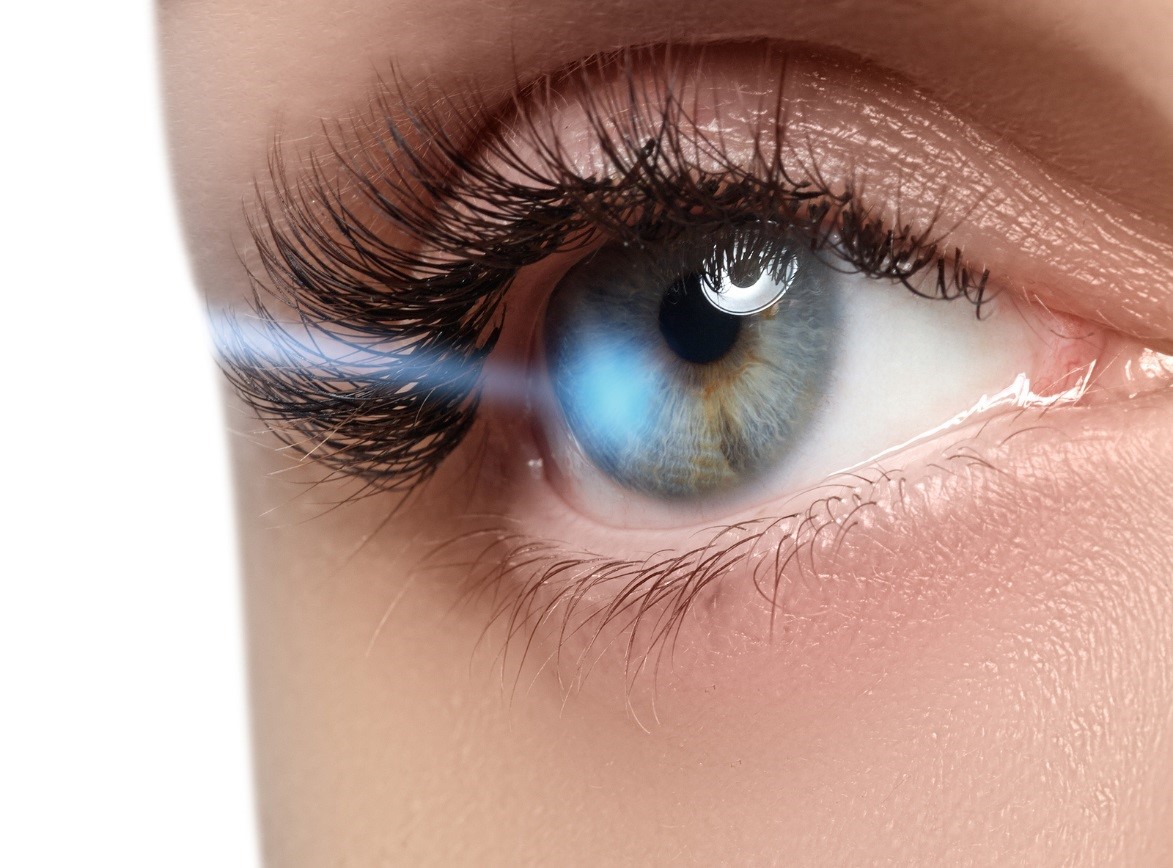
The Evolution of Correcting Vision: From Specs to LASIK Eye Surgery
Most people today see a pair of glasses as rather common. However, people of ancient times regarded it a life-changing invention. According to history books, it was in the early 13th century Italy where the first appearance of a pair of eyeglasses was first documented. Still, historians believe that vision correction was an evolution rather than a specific invention. In fact, they believe that the idea originated from rock-crystal stone magnifier used in ancient times to enhance images.
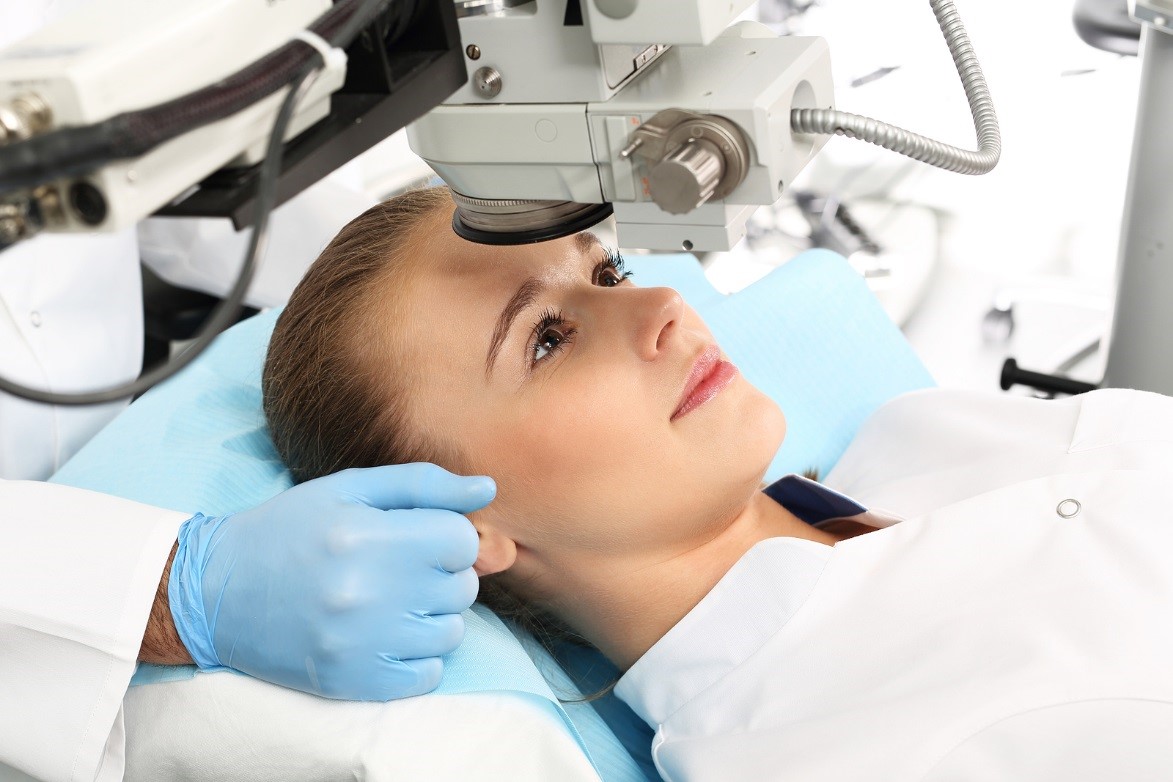
How People Dealt with Poor Vision Before Laser Eye Surgery and Glasses
The history of vision is undoubtedly a rich and long one.
There is one popular anecdote about former US President Theodore Roosevelt and his first pair of eyeglasses. Apparently, the young President Roosevelt was so excited to finally witness the world come into focus. He considered that specific moment when he first wore his eyeglasses to be one of the most memorable of his entire life.

Eye Care for Millennials: Getting Lasik Eye Surgery for Great Vision
Without a doubt, the millennial generation, or individuals born between 1980 to 2004, lived in an era almost completely different from those born before them. Specifically, the everyday lives of millennials are shaped largely by their dependence and use of modern technology and social networks. Needless to say, the digital age has impacted every aspect of their being, including the health of their eyes and their need for eye care.


